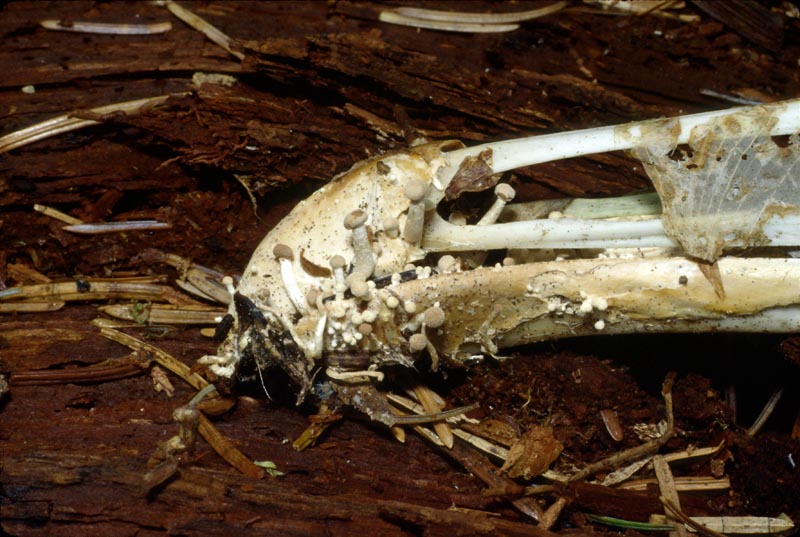Substrate: The two most common species are O. corvina, which occurs on owl pellets, bird carcasses, hair, and wool, and O. equina (Willdenow) Persoon: Fries, found on the decaying horns and hooves of cattle and sheep.
Conservation Status: Not of concern
Small mushroom structures with a cap and stipe are found in several groups of ascomycetes, for example, the fruitbodies of Cordyceps, Vibrissea, and Mitrula, and the club-shaped earth tongues. Though similar in appearance to these fungi, the very small fruitbodies of Onygena species differ in that the cap surface breaks into a powdery spore mass at maturity. O. corvina reaches at most 25 mm (1 in.) in height, and has a whitish stalk and an ocher to light brown cap. These fungi are widely distributed but infrequently collected because of their small size and occurrence on animal remains which usually are avoided by most mushroomers.
PNW Herbaria: Specimen records of Onygena corvina in the Consortium of Pacific Northwest Herbaria database.
CalPhotos: Onygena corvina photos.



